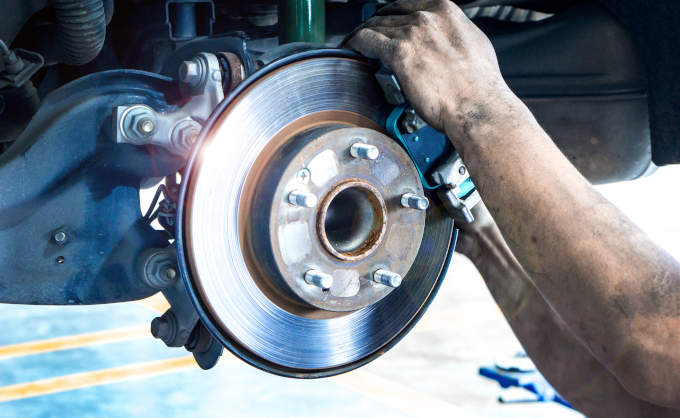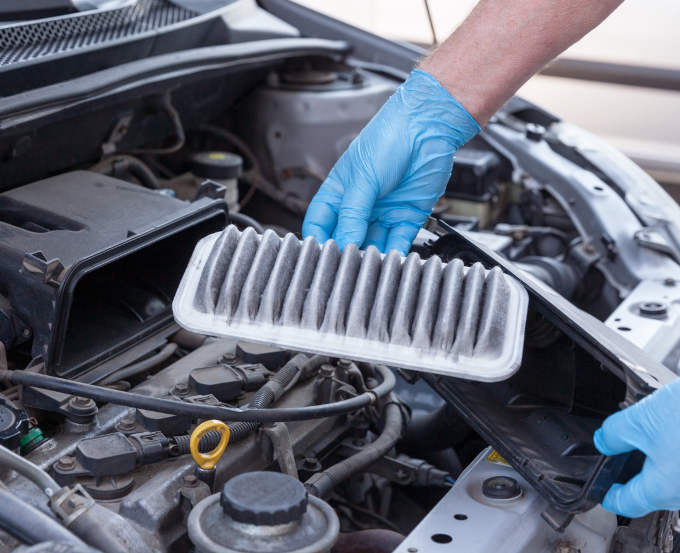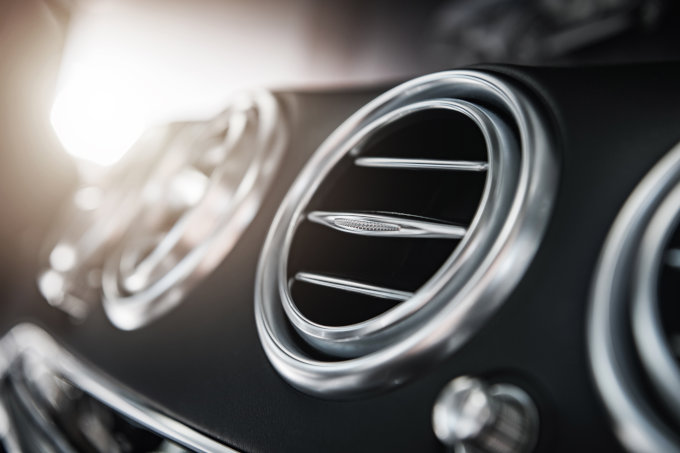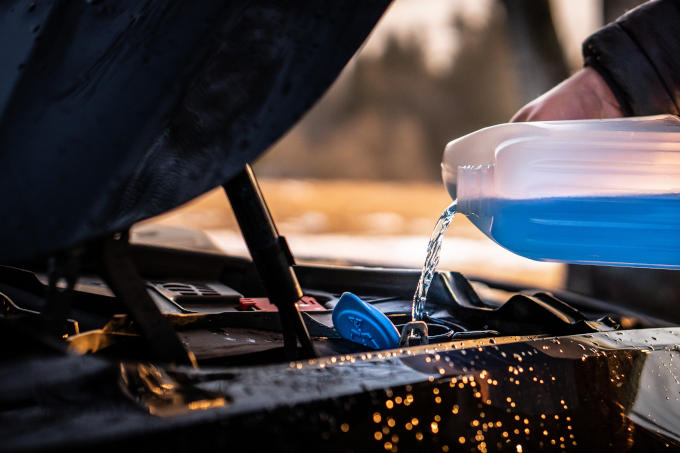Originally published on 03/29/2015
Updated on 10/04/2022
Your engine is the piece of machinery that propels your vehicle forward, and the only thing stopping it is your braking system. The faster you drive, the more stopping power your brakes need to produce. Functioning brakes are a critical component of any vehicle.
Your brakes are comprised of several components, including brake rotors. Brake rotors are one of the more durable components in your vehicle and should last between 30,000-70,000 miles. However, they aren’t immune to damage or failure due to various factors.
In this article, we’ll explain what brake rotors are, what they do, how they can become warped, and warning signs of failure.
What Are Brake Rotors?
Brake rotors are a vital component of any vehicle's braking system, yet many drivers do not know what they are or do.
Brake rotors, commonly known as brake discs, are two metal discs attached to your wheels. You’ll often see them in the front wheels, but in some vehicles, brake rotors are also installed on rear wheels. The bigger the discs, the more stopping power your braking system produces.
When you apply the brakes on your vehicle, the energy is transferred through brake fluid onto the brake calipers. The brake calipers enforce the brake rotors to clamp down on your brake rotors. This generates friction which slows the car down.
What Are Warped Rotors?
We throw around the word warped brake rotors, but what is a warped rotor?
It’s a misnomer to think that the metal of these discs becomes structurally distorted or bent. Rotors and incredibly strong and can withstand extreme heat. Rarely do they “warp” in the truest sense of the word.
The term “warped rotors” refers to the surface of the disks, not the metal. We already know rotors are giant metal discs. Due to various reasons, they can lose their smooth surface. If your rotors aren’t flat, they are called warped rotors.
With warped brake rotors, the brake pads won’t fully engage when you apply the brakes. This reduces the friction between them, thus reducing the vehicle's stopping power.
Symptoms of Warped Rotors
Taking a peek at the rotors each time you plan to drive is not practical. Instead, you need to know how to identify the symptoms of warped rotors.
Squealing Noise
The first and easiest identifiable symptom is a squealing noise when applying the brakes at low speeds.
Sometimes squeaky brakes are caused by worn brake pads, not a warped rotor. The only way to pinpoint the source is via a physical inspection by an experienced technician.
Shaking or Vibrations
The uneven surface of warped rotors can cause your vehicle to shake or vibrate when applying the brakes. Here are a few examples:
- Your brake pedal shudders
- Your steering wheel vibrates
- Your hands or foot shakes when you brake
These warning signs are more common when the issue is more severe.
Engine or transmission issues can also cause vibrations. But if you feel these vibrations only when braking, the rotors are most likely causing it.
Ineffective Brakes
The rotors are a vital component of the braking system. Warped rotors reduce the braking power of the vehicle. You'll eventually notice that it takes longer to come to a halt.
If your vehicle brakes have an ABS braking system, the ABS brakes will engage more often. Even if you brake at low speeds, the ABS brakes will engage to stop the vehicle.
Physical Damage
Warped rotors and worn rotors are easy to identify. With worn rotors, you might also see a lip around the edge of the rotor.
The rotors heat up and cool down each time your break and are made to expand and contract without damage. However, in severe cases, structural failure can occur in severe cases, and you may see cracks in your brake rotor. This needs immediate remediation. Rusted or scorched rotors also indicate the need for rotor replacement.
Dangers Of Warped Rotors
Brakes are an integral part of a vehicle's safety. Driving without functioning brakes, or, in this case, driving with warped rotors, can cause brake failure.
Most drivers have a good sense of their vehicle’s handling over time, such as the distance it takes to come to a complete stop. Warped rotors can unexpectedly increase stopping time, resulting in a potentially serious accident.
Continuing to drive with warped rotors will cause catastrophic brake failure due to more and more components failing.
With your warped rotors, your ABS brakes will be strained, damaging the systems' sensors. Sooner or later, your ABS brakes will fail, which is a costly repair.
Similarly, other parts of your brake may also falter, especially if the rotors are cracked, which is a serious structural failure. Brake pads and calipers, along with the entire braking system, will also eventually fail.
Why Do Rotors Warp?
1. Driving habits and environment
Brakes are there for stopping your car. But if you slam your brakes constantly at high speeds, your brake rotors will heat up fast due to the friction. Metal becomes softer when heated, which is why your rotors will warp under these conditions.
Your climate and environment can also be a factor If you are often driving in hilly terrain or are constantly in traffic, it can take a toll on your vehicle’s rotors.
2. Faulty brake calipers
Brake calipers clamp onto the surface of your rotors. If they apply more force than needed, it will put too much stress on the rotors. This can overheat the rotors and cause them to warp.
Similarly, if your brakes don't function properly, they can cause your brake rotors to warp. For example, if your rear brakes aren't working, your front rotors must work double time, resulting in warped rotors.
3. Neglect of Other Components
Not replacing your brake pad on time will wear them down, causing metal-on-metal contact between the brake and the rotor when applying the brakes. This damage can create deep grooves in the rotor.
4. Over torquing
Over torquing happens when you put too much effort into tightening your lug nuts when you put your wheels back on. This puts additional stress on your rotors which causes them to wear quickly and warp.
5. Rapid temperature changes
You already know that brake rotors heat up a lot. When your rotors are hot, if you drive over a puddle of water wetting the rotor, it will cause a rapid drop in temperature. Metals expand and contract with temperature changes. If this happens rapidly, it can warp your rotors.
All of these issues are contributing factors to the overheating and damage to the rotors on your vehicle. It’s important to know what warps your rotors and do what you can to help prevent it from occurring.
Should You Resurface or Replace Warped Rotors?
There are two options when rotors fail. You could replace them entirely or remove the outer surface of the rotor to create a smooth surface.
Resurfacing is a good option because it’s a more cost-effective solution. Resurfacing brake rotors can be done in several ways, but the most common method is to use a lathe. The lathe removes a small amount of material from the brake rotor, which smooths out any imperfections, corrosion, or deposits and restores the original surface to one that is flat.
However, replacing rotors might be better because this solution tends to last longer. Replacement is also necessary when resurfacing cannot be done, such as if the rotors are cracked or too thin.
How To Prevent Warped Rotors
There are a few practices that'll allow you to prevent warped rotors.
- Practice routine maintenance
Regular, seasonal maintenance by a qualified technician will catch anything that may be amiss with your braking system.
For DIYers, one of the things you can do is clean the rotors and brake pads. Take them apart and use a wire brush and sandpaper to remove built-up dirt. - Use quality parts
Investing in quality brake pads will also protect your rotors. - Improve your defensive driving techniques
Becoming a better, safer driver will help save you money in all types of repairs—not just for your braking system—and will help cut down on the wear and tear of many components in your vehicle, Brush up on your defensive driving skills through reading or take a refresher driving course.
In Summary
Now you know how essential rotors are to your vehicle’s performance and safety. Driving without rotors is dangerous and can end up damaging your vehicle. If you notice symptoms of rotor failure, take your vehicle to a trained technician immediately. Invest in good quality brake rotors to avoid premature failure, protect your rotors with timely maintenance, and adopt good driving habits.
At AAMCO Lee’s Summit, we can help you with your rotors and more. We have the latest technology and equipment to get the job done quickly and efficiently. We also have a team of highly skilled and experienced technicians who are experts in this field. They will be able to help you with any problems you may have. Schedule an appointment today!










